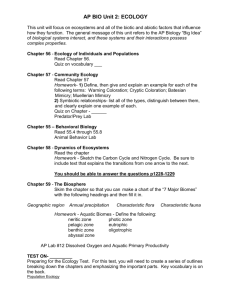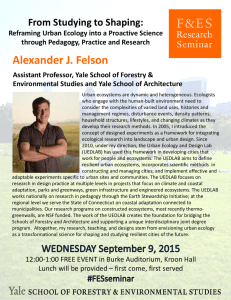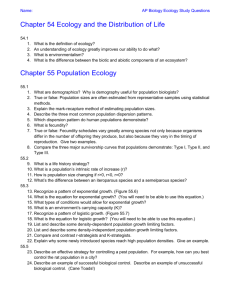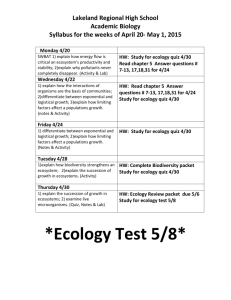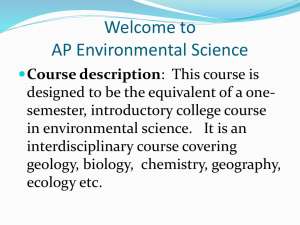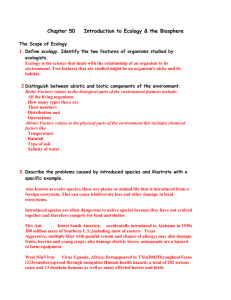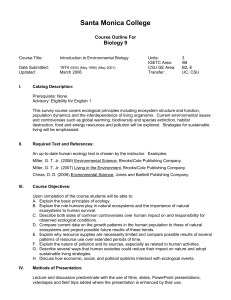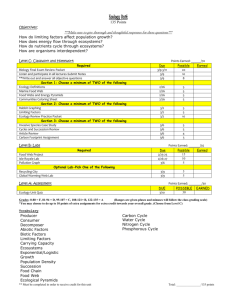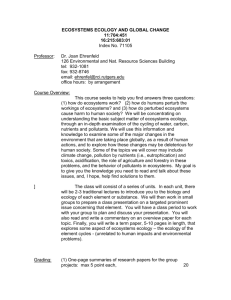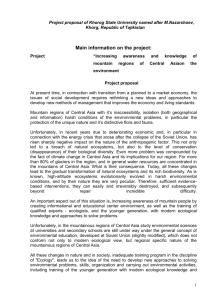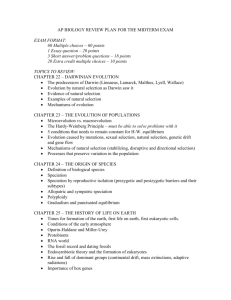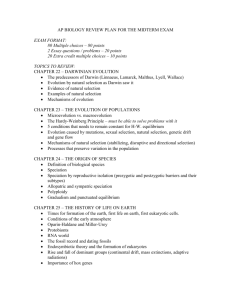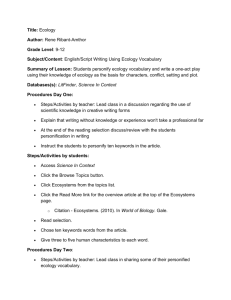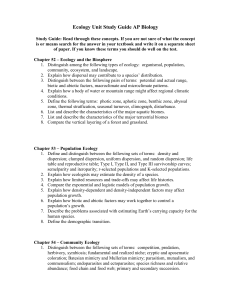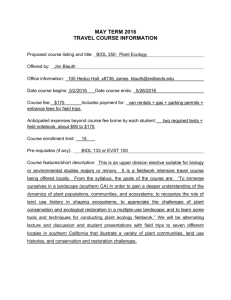Unit 6 – Ecology: Review Questions
advertisement
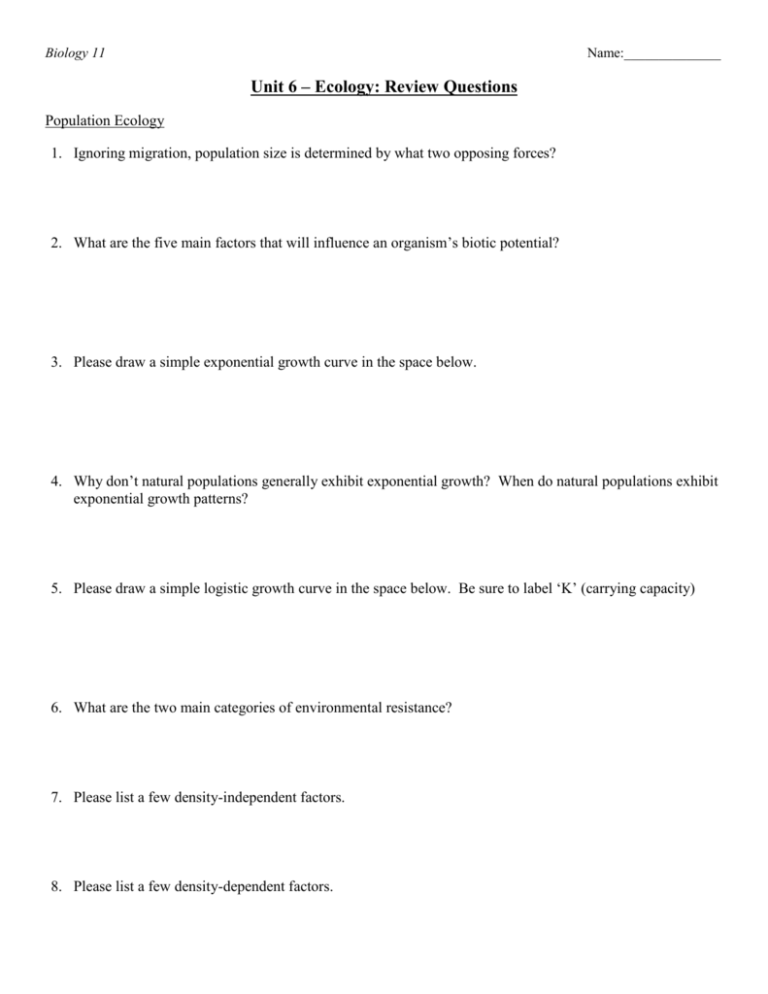
Biology 11 Name:______________ Unit 6 – Ecology: Review Questions Population Ecology 1. Ignoring migration, population size is determined by what two opposing forces? 2. What are the five main factors that will influence an organism’s biotic potential? 3. Please draw a simple exponential growth curve in the space below. 4. Why don’t natural populations generally exhibit exponential growth? When do natural populations exhibit exponential growth patterns? 5. Please draw a simple logistic growth curve in the space below. Be sure to label ‘K’ (carrying capacity) 6. What are the two main categories of environmental resistance? 7. Please list a few density-independent factors. 8. Please list a few density-dependent factors. 9. What’s the difference between interspecific and intraspecific competition? 10. Please list and briefly explain the other two types of competition we discussed in class. 11. Please list the three major types of spatial distributions for organisms we discussed in class. Include a basic diagram beside each type of distribution pattern. Community Ecology 12. How is a community different from a population? 13. Please fully describe what is meant by an organism’s ‘ecological niche’. 14. What is the ‘competitive exclusion principle’? 15. We discussed the example of North American warblers exhibiting ‘resource partitioning’. How were these different species of warblers partitioning (splitting up) resources? Why does this matter? 16. Please list a couple reasons why camouflage is important. 17. Please briefly explain warning coloration. 18. What’s the difference between Mullerian and Batesian mimicry? 19. Please give a couple examples of startle coloration. 20. What is a keystone species? Why are they so important? 21. What is the difference between primary and secondary succession? 22. What are pioneer species? 23. What is the difference between the climax and subclimax stages of succession? Energy Flow in Ecosystems 24. Why are autotrophs (producers) so important in ecosystems? 25. What is meant by ‘net primary productivity’? 26. What’s the difference between a food chain and a food web? 27. What’s the difference between detritus feeders and decomposers? 28. Why can energy transfer in ecosystems be considered ‘inefficient’?


